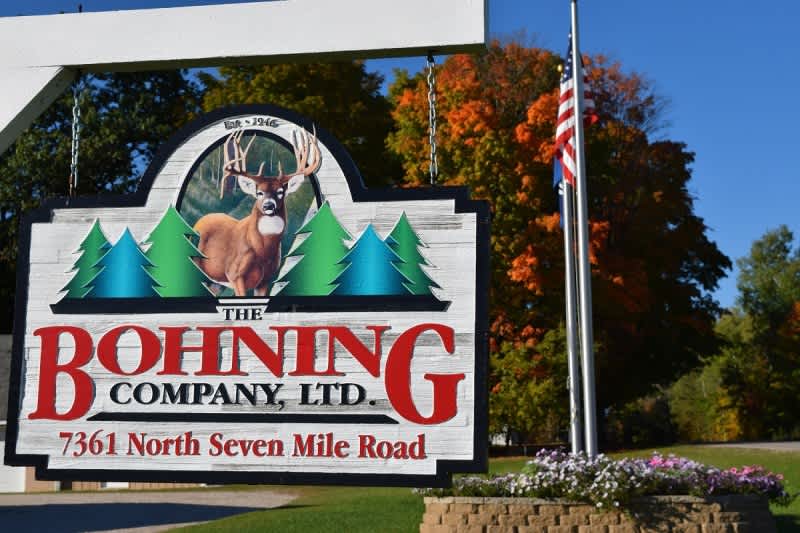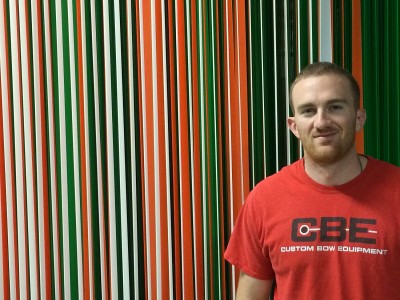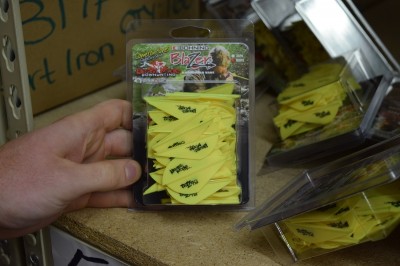Inside Bohning Archery: One of the Biggest Names in Bowhunting
Derrek Sigler 10.22.14

To truly be innovative, you look at a need and devise a way to fill that need through a path that hasn’t been taken before. In modern archery’s infancy, bowhunters and shooters were left to their own devices to construct and maintain their own equipment. Rollin Bohning, a research chemist by trade and a serious bowhunting enthusiast, wasn’t happy with the available materials used to bond broadheads to arrow shafts. His solution was to develop a new cement for that exact purpose and in 1946, the Bohning Company was formed.
When I sat down recently with Michael Collins, Bohning’s North American Sales Director, he asked me something early in our conversation that really got me: “Have you ever been here before?”
I had not. It hadn’t really sunk in until that moment. I live just a few minutes’ drive from Bohning, and know some of the key people there, yet I hadn’t made my way there until just recently. About as much as the archery world owes to Fred Bear for what he did to bring us the modern bow, Rollin Bohning and his family have done the same to the arrow. It really was no surprise to learn that the two were friends and often worked on things together. With Bear in Grayling, Michigan, and Bohning just a short 25 minutes away in Lake City, it stands to reason.

I was happy to learn as well that Bohning has always been a family-owned business and it intends to stay that way. Rollin and his wife all had daughters. One of the Bohning girls, Martha, married Colby Johnson, who became president of Bohning in the early 1970s when Rollin went into semi-retirement. Colby and Martha ran the company until 1987, when their son-in-law Larry Griffith took the helm. Colby was my initial connection to the company. He is a lifelong friend of my uncle, Larry Wheat. It was through Larry that I started bowhunting—oddly enough, with a Bear bow.
The thing about traditions…
When you build a company upon a strong tradition, it has to work, right? That first product developed by Rollin Bohning, Ferr-L-Tite, is still the industry-standard bonding agent for gluing tips to arrow shafts. Besides a few tweaks to the formula, it is the same basic product Rollin introduced in 1946. One of the big products developed under Johnson’s tenure was the Fletch-Tite Vane. The Fletch-Tite revolutionized vanes, replacing feathers as the dominate vane material.
Today, the biggest product in the Bohning catalog is the Blazer Vane. The Blazer had a major impact on the archery world and the company, Collins said. The two-inch-long vane was a radical departure from standard vanes. It’s not just the shape either.
“While other vanes are molded, we stamp the Blazer vane,” Collins said. “The Blazer material is molded on ribbons with the bases of the vane on each side of the ribbon. We then cure the whole ribbon by hanging it in the factory. The vane material is optically sorted for consistency. Each vane is stamped out using computer-controlled machinery and sorted again for defects.”
The processes used for the Blazer are there to insure the vane is perfect when it ships to the customer. The point of going through the extra steps is to maintain the Blazer’s reputation as the most accurate hunting vane on the market, Collins said.

What truly impressed me about the Bohning factory was that the machinery used to create the various products, from the Blazer to the assorted adhesives and more, was mostly designed and built in-house. The company identified a need to make the products as high-quality as possible, and created the machines needed to do it. It’s the same ingenuity that the company was founded upon.
It must be working, too. The company produces roughly 35 million vanes annually, the vast majority of them Blazers, Collins said. The Blazers are packaged to 36, 100, and 1,000 per box and they don’t keep many on-hand in the warehouse.
“We sell through most of our supply every season,” Collins said. “We sell a lot through shops ranging from the mom-and-pop archery and sporting goods stores, all the way through the major big-box retailers.”
Looking forward
So what’s next for Bohning? Collins hinted at some new products coming down the pipeline, but wouldn’t share any of the details just yet. He simply smiled and said that the products fit into the Bohning tradition.
“We don’t branch out into areas that aren’t what we do,” Collins said. “We’ve looked at coming out with new products and each time we ask ourselves if it fits in with what we do, and if we can have the kind of quality control we expect of everything we do.”
Keeping tight control over every product fits with the company as a whole. Even in retirement, Johnson still stops by to check in on things. In fact, I had just missed him by about 15 minutes when I was visiting. Collins said there are “almost daily” offers to acquire the company, but that won’t be happening. Bohning is part of the community, both locally and of the archery and hunting communities. From the looks of things, that is a tradition they intend to keep.

